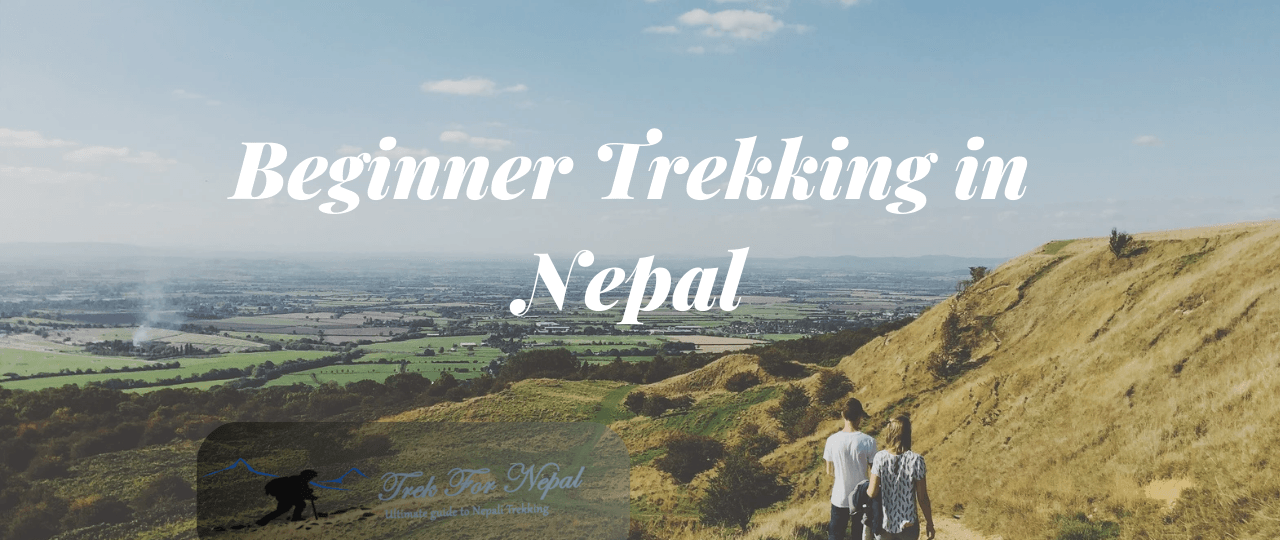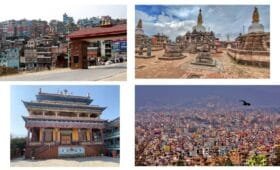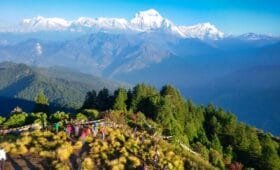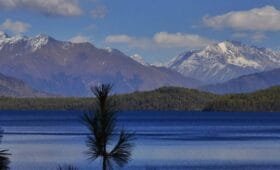Nepal, the land of towering mountains, serene valleys, and rich cultural heritage, is a trekker’s paradise. It’s not just for seasoned mountaineers—beginner trekking in Nepal is gaining popularity as more travelers discover the breathtaking beauty of the Himalayas. Whether looking for scenic trails around Kathmandu or mesmerizing mountain views near Pokhara, Nepal has something for every beginner.
Trekking in Nepal isn’t just about conquering peaks; it’s about embracing the journey through ancient villages, lush forests, and vibrant cultures. But if you’re a first-time trekker, the idea of navigating through rugged trails might seem daunting. This guide will walk you through everything you need to know, from essential trekking tips for beginners to the best trekking gear and beginner-friendly routes.
Why Choose Nepal for Your First Trek?
Nepal offers a unique blend of natural beauty and cultural experiences that few places can match. Here’s why it’s the perfect choice for beginners:
- Diverse Trails: From gentle hikes around the Kathmandu Valley to more challenging yet manageable routes near Pokhara, Nepal has trails for all fitness levels.
- Cultural Immersion: Trekking in Nepal isn’t just about nature; it’s about connecting with local communities, experiencing traditional lifestyles, and tasting authentic Nepalese cuisine.
- Well-Developed Infrastructure: With established teahouses, guided tours, and readily available trekking gear, beginners can trek comfortably and safely.
Essential Trekking Tips for Beginners
Before you set out on your adventure, consider these trekking tips for beginners to ensure a safe and enjoyable experience:
1. Start with Easy Trails
Aiming for the Everest Base Camp is tempting, but as a beginner, it’s wiser to start with easier routes. Choose short, lower altitude, and less physically demanding trails.
2. Plan Your Trekking Season
- Best Seasons: Spring (March-May): Pleasant temperatures, blooming rhododendrons, and clear skies.
- Autumn (September-November): Crisp air, stable weather, and stunning mountain views.
- Avoid: Monsoon season (June-August) due to heavy rainfall and leeches.
3. Pace Yourself
Don’t rush. Trekking is about enjoying the journey. Walk steadily, take frequent breaks, and acclimatize properly to avoid altitude sickness.
4. Stay Hydrated and Nourished
Drink plenty of water to stay hydrated. Avoid alcohol as it can worsen altitude sickness. Opt for nutritious meals that provide energy and stamina.
5. Hire a Guide or Porter
If you’re unfamiliar with the terrain, consider hiring a local guide for navigation and cultural insights. Porters can help carry your heavy bags, making the trek less exhausting.
Pro Tip: Hiring guides and porters also supports the local economy.
Trekking Gear for Beginners: What to Pack
The right Nepal trekking gear is essential for a safe and comfortable journey. Here’s a comprehensive packing list:
Clothing: Layer Up!
- Base Layer: Moisture-wicking t-shirts and thermal wear to keep you dry.
- Insulation Layer: Fleece or down jacket for warmth in the evenings.
- Outer Shell: Waterproof and windproof jacket and pants for unpredictable weather.
- Trekking Pants: Lightweight and comfortable for long walks.
- Footwear: Trekking Boots: Sturdy, waterproof boots with ankle support.
- Socks: Moisture-wicking and woolen socks for warmth.
Accessories: Stay Comfortable and Safe
- Backpack: 30-40L backpack with a rain cover.
- Trekking Poles: For stability on uneven terrains.
- Sunglasses and Hat: To protect against sun and snow glare.
- Gloves and Scarf: For colder regions.
- Water Bottle and Purification Tablets: To stay hydrated safely.
First Aid and Toiletries
- Basic first aid kit including band-aids, antiseptic, and pain relievers.
- Sunscreen and lip balm with high SPF.
- Hand sanitizer and wet wipes.
Pro Tip: Rent or buy trekking gear in Kathmandu and Pokhara at reasonable prices.
Best Beginner Trekking Routes in Nepal
Nepal offers beginner-friendly trekking routes combining scenic beauty, cultural experiences, and manageable challenges. Here are some of the best:
1. Ghorepani Poon Hill Trek
- Duration: 4-5 days
- Starting Point: Nayapul (1.5 hours from Pokhara)
- Maximum Altitude: 3,210 m (Poon Hill)
- Difficulty Level: Easy to Moderate
- Highlights: Spectacular sunrise views over Annapurna and Dhaulagiri ranges, vibrant rhododendron forests, and cultural encounters in Gurung and Magar villages.
Why It’s Great for Beginners:
The trail is well-marked and short in duration. It offers teahouse accommodations with hot meals and comfortable beds. The moderate altitude makes acclimatization easier for first-time trekkers.
2. Langtang Valley Trek
- Duration: 7-9 days
- Starting Point: Syabrubesi (7-8 hours drive from Kathmandu)
- Maximum Altitude: 3,870 m (Kyanjin Gompa)
- Difficulty Level: Moderate
- Highlights: Panoramic views of Langtang Lirung, visits to ancient monasteries, and cultural interactions with the Tamang community.
Why It’s Great for Beginners:
This trek offers a rich blend of natural beauty and cultural experiences. It’s less crowded than popular routes, providing a peaceful trekking experience.
3. Everest View Trek
- Duration: 5-7 days
- Starting Point: Lukla (30-minute flight from Kathmandu)
- Maximum Altitude: 3,880 m (Tengboche Monastery)
- Difficulty Level: Moderate
- Highlights: Stunning views of Everest, Ama Dablam, and Lhotse, cultural immersion in Sherpa villages, and visit to Tengboche Monastery.
Why It’s Great for Beginners:
This short trek offers spectacular mountain views without the strenuous climb to Everest Base Camp. It’s ideal for first-timers wanting to experience the Khumbu region.
FAQs About Beginner Trekking in Nepal
1. Is trekking in Nepal safe for beginners?
Yes, as long as you choose beginner-friendly routes, acclimatize properly, and follow safety guidelines.
2. Do I need a guide for trekking in Nepal?
While it’s possible to trek independently, hiring a guide enhances safety, navigation, and cultural insights.
3. What’s the best time for beginner trekking in Nepal?
Spring (March-May) and Autumn (September-November) are ideal for clear views and pleasant weather.
4. Can beginners trek to Everest Base Camp?
While possible, EBC is challenging for beginners due to its high altitude and longer duration. Start with easier treks like Poon Hill or Langtang Valley.
Conclusion: Ready to Begin Your Adventure?
Beginner trekking in Nepal is a thrilling and rewarding experience. With the proper preparation, gear, and route selection, you can safely explore the majestic Himalayan trails and immerse yourself in Nepal’s rich culture.
Whether you’re admiring sunrise views from Poon Hill, exploring the serene Langtang Valley, or catching your first glimpse of Everest, the memories you make will last a lifetime.
Call to Action (CTA)
Ready to embark on your first trekking adventure? Start booking today or contact us and discover the magic of Nepal’s breathtaking landscapes! Have questions or need help organizing your trek? Comment below or share this guide with fellow adventure seekers.
Trekking in Nepal is calling—are you ready to answer?




